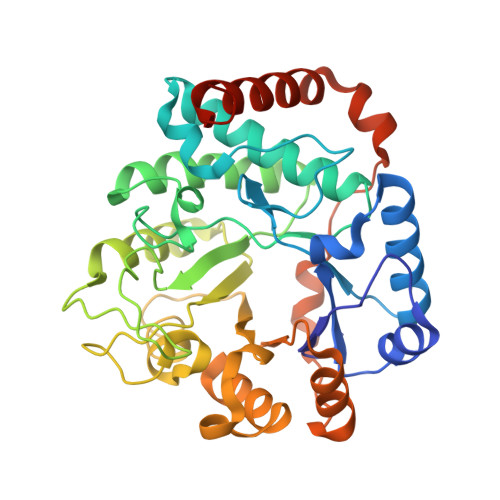Small molecule inhibitors of a glycoside hydrolase attenuate inducible AmpC-mediated beta-lactam resistance.
Stubbs, K.A., Balcewich, M., Mark, B.L., Vocadlo, D.J.(2007) J Biological Chem 282: 21382-21391
- PubMed: 17439950
- DOI: https://doi.org/10.1074/jbc.M700084200
- Primary Citation of Related Structures:
2OXN - PubMed Abstract:
The increasing spread of plasmid-borne ampC-ampR operons is of considerable medical importance, since the AmpC beta-lactamases they encode confer high level resistance to many third generation cephalosporins. Induction of AmpC beta-lactamase from endogenous or plasmid-borne ampC-ampR operons is mediated by a catabolic inducer molecule, 1,6-anhydro-N-acetylmuramic acid (MurNAc) tripeptide, an intermediate of the cell wall recycling pathway derived from the peptidoglycan. Here we describe a strategy for attenuating the antibiotic resistance associated with the ampC-ampR operon by blocking the formation of the inducer molecule using small molecule inhibitors of NagZ, the glycoside hydrolase catalyzing the formation of this inducer molecule. The structure of the NagZ-inhibitor complex provides insight into the molecular basis for inhibition and enables the development of inhibitors with 100-fold selectivity for NagZ over functionally related human enzymes. These PUGNAc-derived inhibitors reduce the minimal inhibitory concentration (MIC) values for several clinically relevant cephalosporins in both wild-type and AmpC-hyperproducing strains lacking functional AmpD.
Organizational Affiliation:
Department of Chemistry, Simon Fraser University, Burnaby, British Columbia V5A 1S6.



















